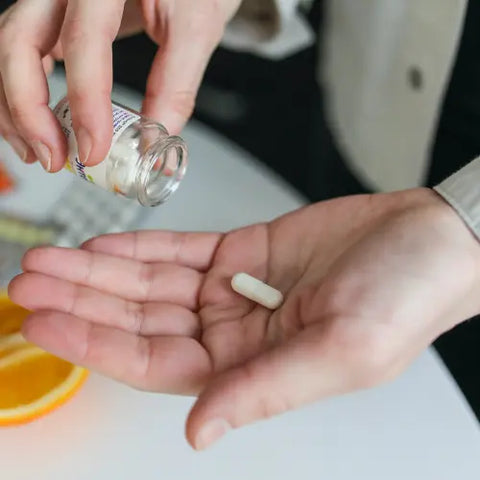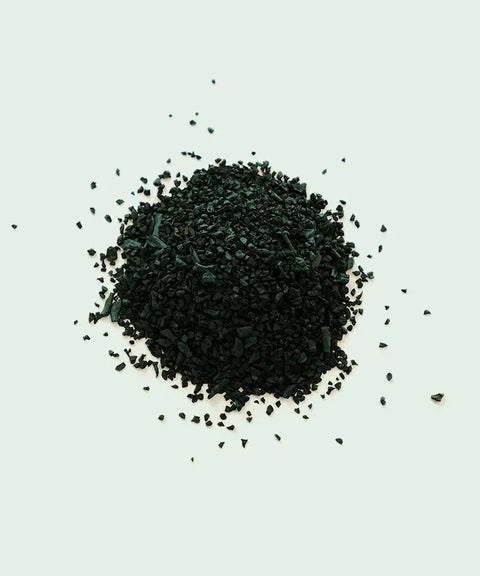Niacin, or vitamin B3 , is a water-soluble B vitamin found naturally in some foods, added to foods, and sold as food supplements. The two distinct forms of niacin in foods and dietary supplements are nicotinic acid and nicotinamide. The body can also convert the amino acid tryptophan into nicotinamide. Niacin is water-soluble, so excess amounts that the body does not need are excreted in the urine. Niacin functions in the body as a coenzyme, with over 400 enzymes relying on it for various reactions. Niacin helps convert nutrients into energy, create cholesterol and fats, create and repair DNA, and has antioxidant effects.
What are the recommended amounts for Vitamin B3?
AJR : Niacin is measured in milligrams (mg) of niacin equivalents (NE). One NE is equal to 1 milligram of niacin or 60 mg of tryptophan. The Recommended Dietary Allowance (RDA) for adults 19 years of age and older is 16 mg NE for men, 14 mg NE for women, 18 mg NE for pregnant women, and 17 mg NE for breastfeeding women.
AMT : The tolerable upper intake level is the maximum daily intake that is not likely to cause harmful effects on health. The UL for niacin for all adults over 19 years of age is 35 milligrams.
Food sources
Niacin deficiency is rare because it is found in many foods, both animal and plant-based.
- Red meat: beef, beef liver, pork
- Poultry
- Fish
- Brown rice
- Enriched cereals and breads
- Nuts, seeds
- Legumes
- Bananas
Food supplements
Niacin is available in supplement form as nicotinic acid or nicotinamide. Sometimes, the amounts in supplements are much higher than the RDA, causing unpleasant side effects like flushing. Niacin supplements are also available as a prescription medication to treat high cholesterol; this is usually an extended-release form of nicotinic acid that allows for slower, more gradual absorption so it doesn't cause flushing. Because of the very high doses of nicotinic acid required, up to 2,000 mg per day, this supplement should only be used under the supervision of a doctor.
Read also: What is the role of Iron?
Signs of deficiency and toxicity
Deficiency
Niacin deficiency is rare in the United States and other industrialized countries because it is well absorbed from most foods (except some cereal grains, in which niacin is bound to its fiber, decreasing its absorption) and is added to many foods and multivitamins. Severe niacin deficiency results in pellagra, a condition that causes a dark, sometimes scaly, rash on sun-exposed areas of the skin, a reddened tongue, and constipation/diarrhea.Other signs of severe niacin deficiency include:
- Depression
- Headaches
- Fatigue
- Memory loss
- Hallucinations
Groups at risk of deficiency
Limited diets. People whose diets are limited in the variety and quantity of foods, such as those who live in poverty or who are very ill and cannot eat a balanced diet, are at increased risk. Developing countries that consume mainly corn are at risk for pellagra because these foods are low in absorbable niacin and tryptophan. Chronic alcoholism. The absorption of several nutrients, particularly water-soluble vitamins, including those of the B family, is reduced in cases of excessive alcohol consumption.
Carcinoid syndrome. This is a disease of slow-growing cancer cells in the intestine that release a chemical called serotonin. This syndrome causes tryptophan in the diet to be converted to serotonin instead of niacin, increasing the risk of low niacin.
Toxicity
Toxicity during consumption of foods containing niacin is very rare, but it is possible. It can occur during long-term use of high-dose dietary supplements. A common sign is redness of the skin accompanied by itching or tingling on the face, arms, and chest. Hot flashes occur mainly when taking high-dose supplements in the form of nicotinic acid, rather than nicotinamide.
Other signs:
- Dizziness
- Low blood pressure
- Fatigue
- Headaches
- Stomach ache
- Nausea
- Vision problems
- Impaired glucose tolerance and liver inflammation in severe cases (at very high doses of 3,000 to 9,000 mg per day for several months/years).
Vitamin B3: Did you know?
Many B vitamins are thought to help increase energy, including niacin. Because niacin is water-soluble (which reduces the risk of it building up in the body to toxic levels), many people don’t hesitate to take a supplement that may contain 100 times the RDA for this vitamin. Although niacin helps several enzymes convert food into ATP, a form of energy, taking doses much higher than the RDA won’t provide a significant energy boost. Often, simply eating a balanced diet with a variety of foods is enough to reap the benefits of niacin for energy.
Corn is naturally rich in niacin , but it is bound to carbohydrates, making it difficult for the human body to absorb. However, when corn is nixtamalized (a traditional tortilla-making process where the corn is treated with calcium hydroxide, cooked, and ground), niacin becomes absorbable due to the calcium hydroxide treatment.
Are you looking for dietary supplements to combat any deficiencies? Algorigin is a specialist in healthy algae.
Discover Algorigin organic natural supplements: Spirulina , AFA Klamath , Chlorella ...




